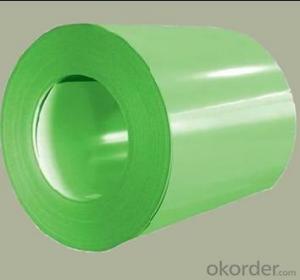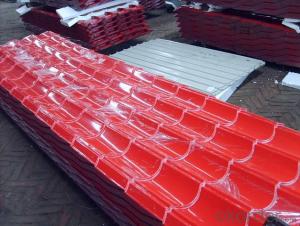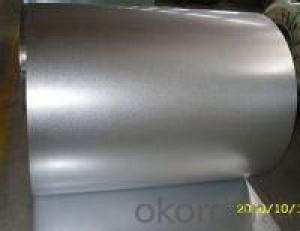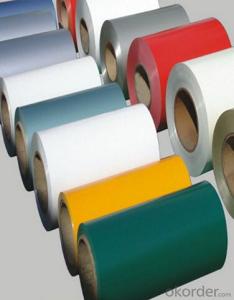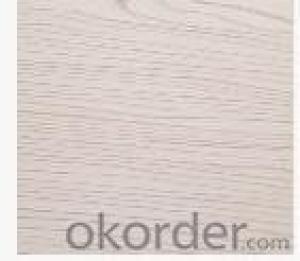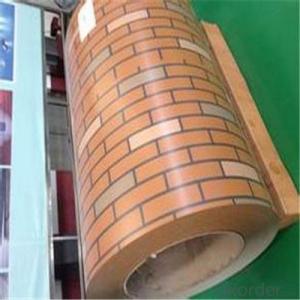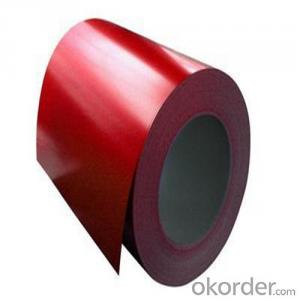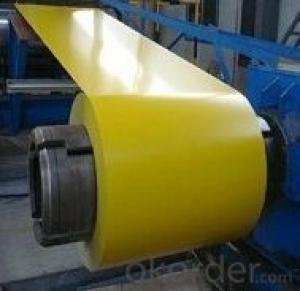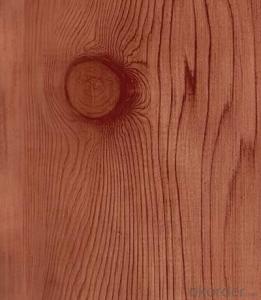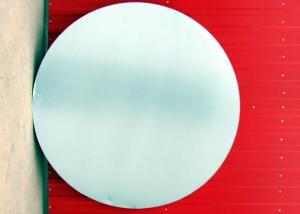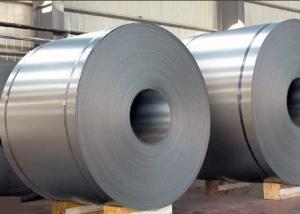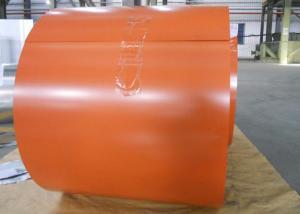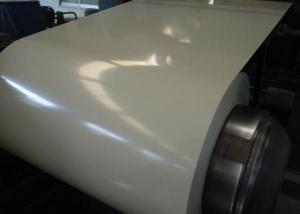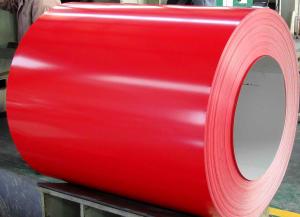Wooden Pattern PPGI Color Coated Steel Coils for Garage Door
- Loading Port:
- Tianjin
- Payment Terms:
- TT OR LC
- Min Order Qty:
- 50 m.t.
- Supply Capability:
- 50000 m.t./month
OKorder Service Pledge
OKorder Financial Service
You Might Also Like
Product Details
Model NO.:CGCC CGLCC
Surface Treatment:Coated
Technique:Cold Rolled
Standard:ASTM, JIS
Steel Grade:Q195
Brand:Cjcsteel
Az Coating:40g~180G/M2
Base Metal:Gi Gl
Delivery:20days
Thickness:0.14mm-1.0mm
Width:600mm-1250mm
Coating:PE
Inner Diameter of Coil:508mm 610mm
Color:Ral Color
Export Markets:Global
Additional Info.
Trademark:CJCSTEEL
Packing:Seaworth Packing
Standard:Dx51d / Dx52d/ Dx53D/ S250, 280, 320gd
Origin:China
HS Code:7210701000
Production Capacity:150, 000ton/Month
Product Description
Ppgi wood grain color coated prepainted galvanised steel coils
1. Width: Within1250mm
2: Thickness: 0.18-0.8mm
3: Pattern: Wood, etc
1) Standard: JIS G3312 CGCC & CGLCC, equivalent to ASTM A755M, EN10169
2) Grade: CGCC and CGLCC
3) Hardness of material: Both soft and full hard are available
4) Surface finish: With or without protect film covered
5) Thickness range: 0.14-1.0mm
6) Width range and General width: Width range 600-1250mm, general width: 914mm, 1000mm, 1220mm and 1250mm.
7) Shape: Both sheet and coil are available
8) Zinc coating: 40-275G/M2, both sides
9) Paint thickness: Top 5 um + (10-20) um modified polyester, any RAL color code. We use Beckers paint for producing.
10) Paint thickness: Reverse 5-10 um Epoxy
11) Coil weight: 4-6 tons, also can be upon customer's requirements
12) Max loading in one 20ft container: 25 tons generally
13) MOQ: 25 tons for each thickness or color;
14) Actual shipped quantity: More or less 5%;
15) Delivery time: 2 weeks or one month generally.
16) Applications: Widely used for roof tiles, outer walls, ovens, explosive-proof steel, electrically controlled cabinets, and industrial freezers in the residential and industrial buildings.
Specification:
| Name | color coated steel coil/prepainted steel coil/PPGI |
| Resin constructure Technique of production | Double painting and double baking process |
| Productivity | 150,000Tons/year |
| Thickness | 0.14-1.0mm |
| Width | 600-1250mm |
| Coil Weight | 3-8 Tons |
| Inside Diameter | 508mm Or 610mm |
| Outside Diameter | 600-1500mm |
| Zinc Coating | Z40-Z275G |
| Painting | Top: 15 to 25 um (5 um + 12-20 um) back: 7 +/- 2 um |
| Standard | DX51D/CGCC |
| SurfSurface coating coloace coating type | PE, SMP, HDP, PVDF |
| Back side coatingcolor | Light grey, white and so on |
| Application | PPGI is featured with light-weight, good looking and anticorrosion. It can be processed directly, mainly used for construction industry, home electronic apparatus industry, electronic apparatus industry, furniture industry and transportation |
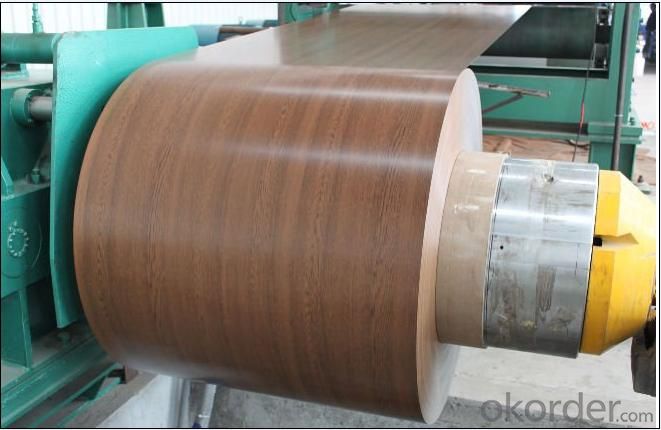
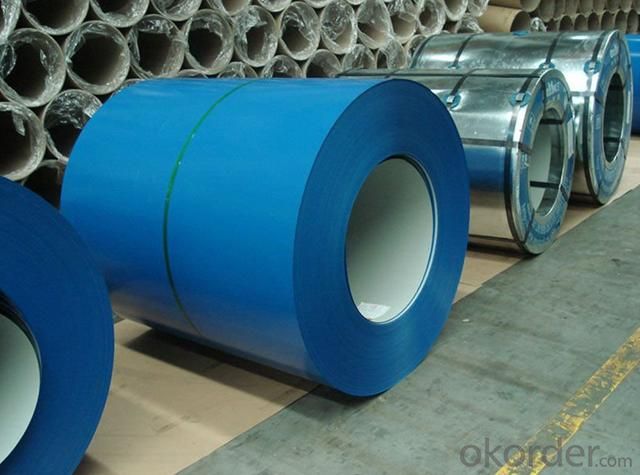
FAQ:
1. What is the minimum order quantity ?
Our MOQ is 50mt for each size. And we will consider to give more discount if you make big order like 1000 tons and more. Further more, the more appropriate payment term your offer the better price we can provide.
2. How long can we receive the product after purchase?
Usually within thirty working days after receiving buyer’s advance payment or LC. We will arrange the factory manufacturing as soon as possible. The cargo readiness usually takes 15-25 days, but the shipment will depend on the vessel situation.
3. How to guarantee the quality of the products?
We have established the international advanced quality management system,every link from raw material to final product we have strict quality test;We resolutely put an end to unqualified products flowing into the market. At the same time, we will provide necessary follow-up service assurance.
4.What is the validity of your quotation?
Normally 7 days.
5.What is your advantage?
24 hour quick response /Customer oriented/ Credit foremost/ Top quality Excellent
- Q: How is steel sustainable as a building material?How is wood sustainable as a building material?
- Wood as it comes from trees which are in nature.
- Q: i have purchased a high dollar Martin guitar and i was wondering if there are many people out there that have used steel string acoustics for classical and flamenco guitar playing.otherwise i will need a nylon stringeror.. uld i put nylon strings on an old yamaha steel string guitar that i have?
- Guitars built for either nylon or steel strings are constructed differently. You will have problems putting nylon strings on a steel stringed guitar and visa verse. I say NEITHER is a good idea. If I were in your shoes, I would walk on line or to a guitar store and purchase a nylon stringed guitar. That's what I did years ago and now I am hooked. I got a second hand Takamine A/E that work just fine for a couple hundred and then just a yr or so ago I got a brand new one, an EC132C and I just LOVE it. As my skills improve I plan on upgrading to a custom built acoustic only with a cutaway. I like cutaways but not the electronics. I never plug into my amp hardly at all. Yamaha makes nylon guitars too VERY cheap and real good tonal quality, I was VERY impressed with one that I played. I upgraded my tuners on my new Takamine to Schaller 16:1 and put the old Takamine tuners on that Yamaha and it's a really nice little guitar to kick around on when I am at that person's place.
- Q: What is the difference between black steel pipes and galvanized steel pipes when used for water or gas, and why?
- Just because two things are painted red doesn't mean that they're the same. You need to know what type of iron (if it really is iron, but doubtful) your black iron pipe is made from. Sometimes standard pipe used in commercial applications for plumbing is called black pipe by the contractors. This type of black pipe is usually A53. Pipes can come in many types of grades of steel. Is the pipe A500, A53, A106, etc? Each grade has slightly different chemical compositions that give the steel different mechanical characteristics. Also, pipe can come in different schedules (wall thicknesses) which does not change the outside diameter of the pipe. With an increase in wall thickness a pipe will become more rigid.
- Q: I am buying my boyfriend a steel guitar for our one year anniversary and I was curious what brand or company I should look into. I want something high quality yet traditional. Money is not really an issue but I don't exactly want to spend an arm and a leg either.Thank you in advance!
- Hi, Since you haven't mentioned a price range, all I can say is that there are plenty of good guitar brands in the moderate to high price range. A good place to start would be to check out these brands - Martin, Taylor, Yamaha, Gibson. There are plenty more but these will get you started. In a lower price range - Epiphone, Takamine and Washburn have some nice guitars as well. There are a LOT of good brands that I haven't covered. These are just the usual suspects. Most of these will be good instruments and they vary in the quality of the wood used and in finer points of their design build, so don't worry too much about finding a 'gem'. Get one of the store staff members to play the guitars a little bit for you and you can pick out the one that sounds best. The sound is the most important. Happy hunting! :) Edit: jcr has a point. I assumed your're talking about a steel string acoustic.
- Q: What is the strongest steel ever made.
- I'm a civil/structural engineer. ASTM A 416 is one of the strongest steels, with a nominal yield stress of 243,000 psi and design ultimate strength of 270,000 psi. This steel is commonly used in pre-stressing and post-tensioning of concrete structures. See the link below to one manufacturer of strands and bars made with this type of steel.
- Q: could someone please explain to me in detail the functions of stainless steel wall ties?
- they tie the walls to the ceiling to keep it from being blow en off in a storm stainless steel wont rust and become weak
- Q: is a 1962 steel penny worth anything?
- 1962 D Penny
- Q: How are steel coils used in the manufacturing of automotive fenders?
- Steel coils are used in the manufacturing of automotive fenders by being shaped and formed into the desired fender design. The coils are cut and stamped into specific shapes, then undergo a series of bending, welding, and finishing processes to create the final fender product. The strength and durability of steel make it an ideal material for fenders, providing protection to the vehicle's wheels and body in case of collisions or impacts.
- Q: Stains tends to leave on the stainless steel microwave oven and its very hard to clean off the stain (brownish stain) please suggest the best way to remove it.
- A okorder /
- Q: Are Steel buildings Fire Resistant, just want to know as I am going to owe it . Suggestions required…………..
- A true structural steel building is composed of steel columns, steel bar joist,steel purlins,steel roof frames,and steel siding. This is all load bearing structural steel. The vulnerable area of a steel building is the exposure of this steel to extreme temps during a fire. Steel becomes weak at high temps and begins to twist and distort like a noodle in hot water. Most all steel buildings now are specified by the architect/engineer to have fire retardant spray applied to the key components to protect against high heat during a fire. Even with that some beams/columns are also wrapped with several layers of type x fire rated drywall. Multi story steel buildings usually have lightweight concrete poured over steel decking for all floors above the ground floor. Any and all penetrations in these concrete floors must be sealed around to stop fire and smoke from spreading from one floor to the next, and fire rated doors at all stairways to each floor. Even ductwork that runs to other floors must have fire rated dampers that close if signaled by a sensor, this stops smoke/fire from spreading through the ductwork. Sprinkler systems are usually required in new structures that exceed at pre-determined square footage by the state you are in. Hope this helps you out.
Send your message to us
Wooden Pattern PPGI Color Coated Steel Coils for Garage Door
- Loading Port:
- Tianjin
- Payment Terms:
- TT OR LC
- Min Order Qty:
- 50 m.t.
- Supply Capability:
- 50000 m.t./month
OKorder Service Pledge
OKorder Financial Service
Similar products
Hot products
Hot Searches
Related keywords
